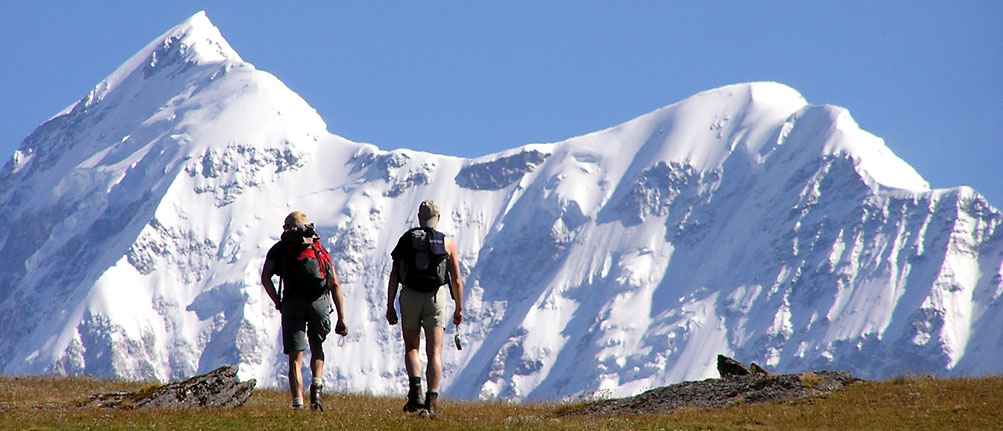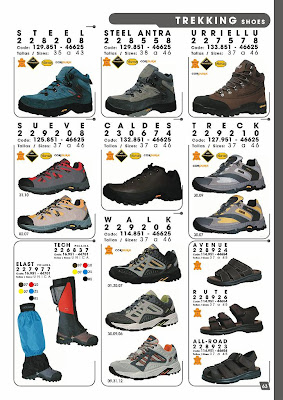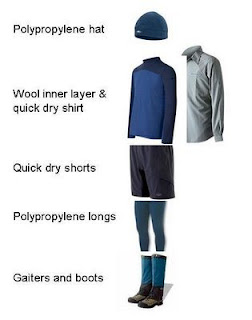Talking
about the basics of trekking which you need to know before you go for the same.
Trekking can be as physically demanding and adventurous as participants decide.
The variety of trekking activities and a terrific choice of destinations
attract a wide mix of participants to the joy of trekking.
Trekking
is a different sort of travel activity. While planning is required, a trek is
subject to the variables of nature. Trekkers move on foot through a variety of
weather conditions and topography, and often through rural areas. Many
experienced trekkers often travel through isolated areas. However, it is also
common to do treks close to cities and towns as well.
Things
to carry :-
Maps - Always carry maps and available guide
books. These should be put in a plastic waterproof clear bag when not in
use. Global positioning systems (GPS) are also becoming cheaper, and these are
useful in
checking your co-ordinates. You can pick up the satellite signal from just
about anywhere. You may also have software available that gives you a clearer
idea of you location via maps.
Water
bottle - A light aluminium water bottle
(available from camping shops) is essential for carrying drinking water. If you
can boil water in the evening and put it in your bottle with a sock covering
the bottle, then you can use this as a hot water bottle for the night. This
will also dry your socks out overnight that you were wearing on the previous
day. You will have warm socks for the morning!
Also,
the water from overnight can be drunk on waking, as it has been boiled and is
now cooled. In the morning, you can heat up some more water and mix it with
herbal tea before you venture off for the day.
Back pack - A strong and durable back pack is requiredIt should be no more
than of medium size. You shouldn't need to carry much on a trek of about 3 days
or so. The pack should have multiple pockets (2 or 3) that are tightly zipped,
as well as some easily accessible non-zipped pockets (1 or 2) that you can
quickly put your hand into for things.
The
back pack definitely needs padded shoulder straps. Also a strap to tighten the
pack around you chest will take a lot of weight off your back. When properly
adjusted, the base of the pack should sit on your hips. The top of the pack
should be at least one hand-width below the base of your neck.
Trekking Shoes - Footwear designed specifically for trekking or hiking is best.
Proper trekking shoes give the best support and traction. Shoes should be worn
with thick socks.
Choose
a pair of shoes that are a half-size larger than your usual street shoes, as
this allows for some swelling of your feet as you walk and is also necessary
for your heavier thicker hiking socks.
Make
sure your trekking shoes are well worn in. This requires about 2 weeks of
frequent wear for new shoes. There is nothing worse than hiking with ill-fitting
or rubbing shoes. It will make every step an agony, and lead to blisters!
Socks -
Wear thick woollen socks or synthetic blend socks.
These
socks will absorb the moisture away from your feet. Wet feet are actually a
main cause of blisters. Extra socks should be carried, especially for warming
your toes at night! In case your shoes are causing trouble you can also wear 2
pairs of socks.
Clothes -
Clothing should be comfortable and breathable.
Pockets
on shirts should be high up so that they do not interfere with your back pack,
or pockets should be on your side. Clothing needs to be durable, water
resistant and wind resistant. Clothing that stretches to allow complete freedom
of movement is best.
Walking
sticks - Walking sticks in each hand take a lot of weight off the legs
and let you use your arms as an additional pair of ‘legs’. This makes it easier
to walk up steep mountains and hills. But I personally use it very rarely I love
to challenge my body for the difficult treks.
Also need to carry
§
Hat (with covering for the neck)
§
Sunglasses
§
First Aid kit
§
Lip balm
§
Sun screen lotion
§
Snack and nibble item
§
Light but warm sleeping bag
§
Pocket knife
§
Compass
§
Mobile phone (it can come in handy)
§
Money (local currency)
Taking Care :-
Study the place where you are going
for trekking very well before you go for trek.
Make a note of near by medical facilities
Make a note of near by villages
in all directions
Do not carry expensive things unnecessarily
If your trekking spot is
tropical or any other type of wild jungle then you should know the living
animal in that jungle, especially if it has big animal then what all things you
should do to protect yourself from them








This information is really useful.
ReplyDelete